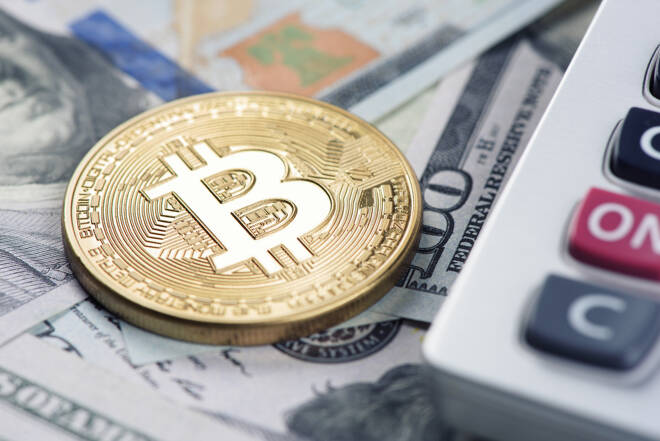Advertisement
Advertisement
Can Bitcoin Hit $100,000 in 2021? Regulators and the Bulls may have to Battle it out!
By:
Bitcoin had an impressive year in 2020, assuming there is no year-end meltdown. More of the same would deliver $100,000 for the bulls...
Bitcoin, BTC to USD, is currently up by a whopping 227% year-to-date, with less than a week remaining of 2020.
It could have been even more impressive had Bitcoin held onto $24,000 levels, after having hit an all-time high of $24,244 on 20th December.
Investors will be questioning whether Bitcoin can continue its upward trajectory that kicked started from a lowly $4,000 back in March.
Trough to peak, Bitcoin surged by an even more impressive 506% and that was in just 3-quarters.
If we take the same trajectory, Bitcoin should hit the dizzying heights of $143,000 in late 2021 before any pullback.
For investors that time it right, they can convert a 2nd hand sedan into a 2nd hand supercar or a down payment on a palace.
The Drawbacks
In late December, we saw the U.S SEC file a lawsuit against Ripple, claiming that Ripple had not registered XRP as a security.
The damage to Ripple’s XRP and the broader crypto market was extensive.
Ripple’s XRP tumbled from a November all-time high of 0.78716 to a December low of $0.2000. That is an alarming 746% slump and in just one month.
As a result of the SEC move, Bitcoin lost momentum, with a pullback to $21,000 levels before steadying. The broader market also hit reverse, with the total crypto market cap falling from a high of $680.60bn to $590.85bn. It may not compare to the market collapse of early 2018, but it was still likely to have been a painful experience for those who jumped in too late.
Back in January 2018, the total crypto market cap had climbed to an all-time high of $761.74bn before its collapse to just $91.24bn in December 2018.
Looking at the market resilience this time around, Bitcoin and a number of the other major cryptos have held their ground.
While the late 2020 momentum rally drove the cryptos to record highs, there was no herd mentality sell-off. This should comfort existing investors and those sitting on the sidelines.
One must question the SEC’s timing. Ripple’s XRP is not new to the market. More importantly, cryptos were under the magnifying glass back in late 2017, so why now?
It may have something to do with the approach towards $1.00 levels. An impressive run from a March low of $0.1165.
For Ripple and XRP holders, however, it wasn’t just the 700% rally that raised eyebrows. Ripple’s platform is one that continues to make a dent into more traditional remittance platforms.
Even after the so-called “Bubble” of 2017, cryptos have yet to become widely acceptable to regulators. It almost seems as the SEC was saving the silver bullet for the next rally that was almost 3-years in the making.
The Positives
While regulators continue to linger and regulatory risk remains a key risk to the market, it isn’t all doom and gloom.
For investors who entered the market early this year, there have been some tidy returns. More importantly, for those holding on or looking to enter or even reenter the market, further upside is plausible.
Adoption and greater acceptance should continue to drive demand for Bitcoin and its morphs.
The bigger question is, however, a much further can Bitcoin rise?
It may well depend on how the remainder of the year and early January pans out…
If Bitcoin can avoid a slide back to sub-$20,000 levels then the Bitcoin bulls will be setting the bar high. We have heard the talk of $1,000,000. Such a bar might be a little too high.
A momentum fueled visit to $100,000? Well, never say never.
About the Author
Bob Masonauthor
With over 28 years of experience in the financial industry, Bob has worked with various global rating agencies and multinational banks. Currently he is covering currencies, commodities, alternative asset classes and global equities, focusing mostly on European and Asian markets.
Advertisement
